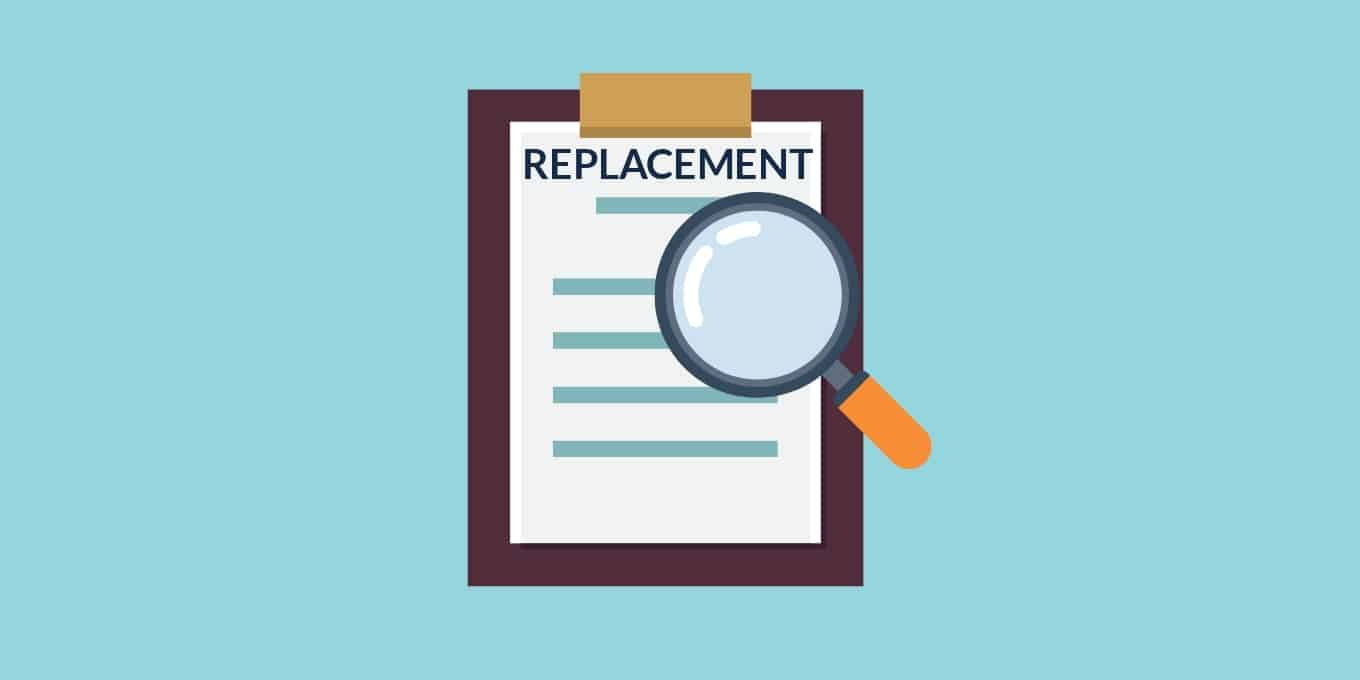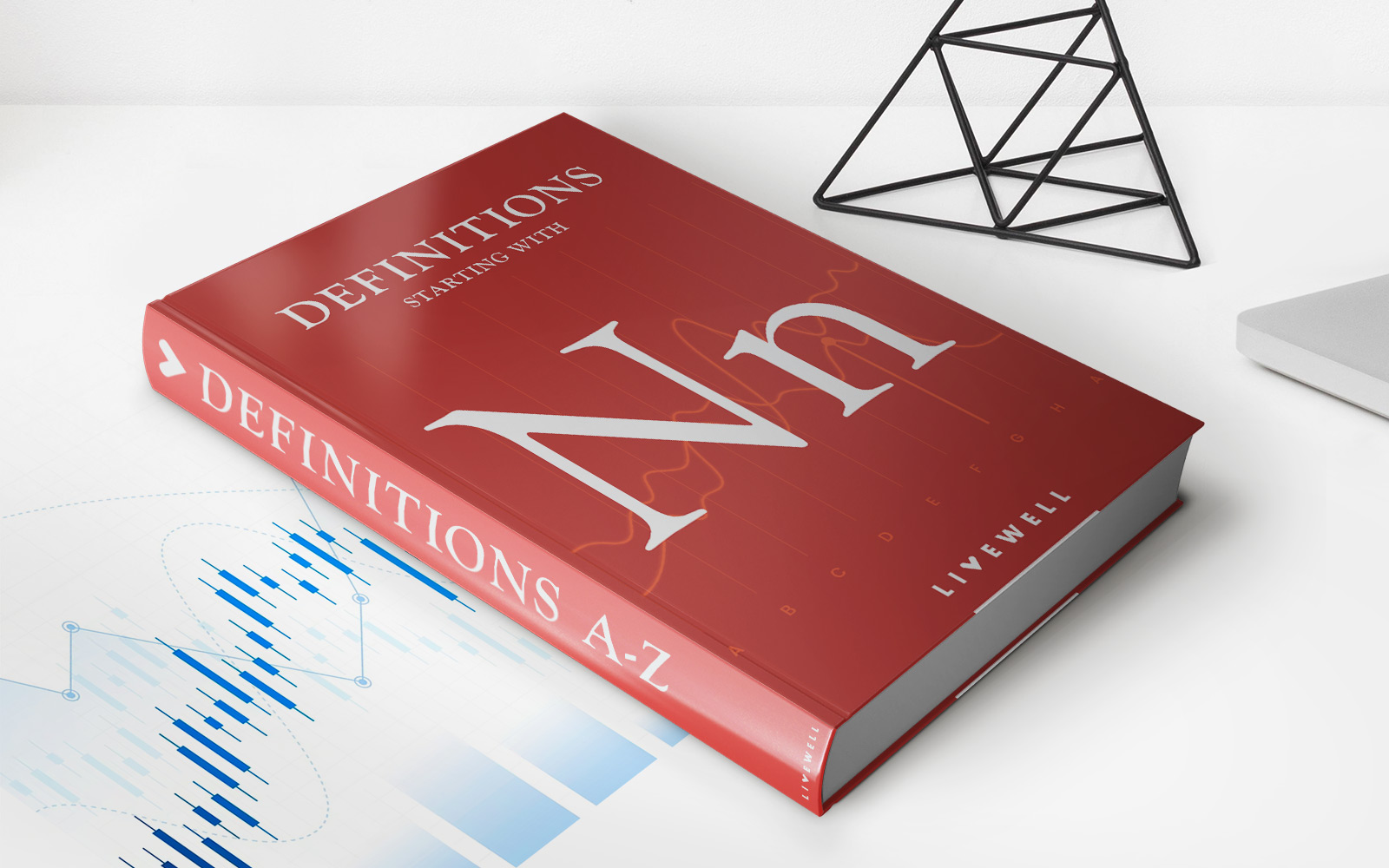

Finance
What Is Credit Life Insurance
Published: January 14, 2024
Discover how credit life insurance can provide financial security for you and your loved ones. Learn more about this important aspect of personal finance.
(Many of the links in this article redirect to a specific reviewed product. Your purchase of these products through affiliate links helps to generate commission for LiveWell, at no extra cost. Learn more)
Table of Contents
Introduction
Welcome to the world of finance, where credit, loans, and insurance play a crucial role in our lives. When it comes to borrowing money, many people are familiar with the concept of taking out a loan. However, what may not be as well-known is credit life insurance and its significance in protecting borrowers and their loved ones.
Credit life insurance is a type of insurance policy specifically designed to cover the outstanding balance of a loan in the event of the borrower’s death or disability. It provides financial security to both the borrower and their family, ensuring that in unfortunate circumstances, the burden of repayment does not fall solely on the surviving family members.
Understanding the intricacies of credit life insurance can help borrowers make informed decisions when taking out a loan. In this article, we will delve deeper into the world of credit life insurance, exploring how it works, its coverage and benefits, as well as its advantages and drawbacks. By the end, you will have a comprehensive understanding of credit life insurance and be equipped to make the best choice for your financial needs.
What is Credit Life Insurance?
Credit life insurance provides protection to the borrower and their family by ensuring that the outstanding loan balance is paid off in the event of the borrower’s death or disability. This type of insurance is typically offered by lending institutions, such as banks or credit unions, at the time of loan origination.
When you take out a loan, the lender will often offer credit life insurance as an option. If you choose to purchase it, the cost of the insurance is added to your loan balance and you will pay a premium along with your monthly loan payments.
The purpose of credit life insurance is to provide peace of mind and financial security to borrowers and their families. In the unfortunate event of the borrower’s death or disability, the insurance policy pays off the remaining loan balance, relieving the family from the burden of repaying the debt.
It’s important to note that credit life insurance is different from traditional life insurance policies. While traditional life insurance provides a death benefit that can be used for any purpose, credit life insurance is specifically tied to the loan and pays off the outstanding balance. This means that the insurance benefits are directly proportional to the amount owed on the loan at the time of death or disability.
Credit life insurance is particularly common in mortgage loans, auto loans, and personal loans, where the loan amounts are usually larger and the term of the loan can be several years. However, it can also be available for smaller loans or credit card debts, depending on the lending institution’s offering.
Now that you have a basic understanding of what credit life insurance is, let’s delve into how it works and the benefits it offers.
How Does Credit Life Insurance Work?
Credit life insurance operates in a straightforward manner. When you opt for credit life insurance, the lender adds the insurance premium to your loan balance. This means that you will pay a slightly higher monthly payment, which includes both the loan repayment and the insurance premium.
In the event of your death or disability, the insurance company will be notified, and their claims department will begin the process of settling the insurance claim. This typically involves requesting documentation, such as a death certificate or proof of disability, to verify the claim.
Once the claim is approved, the insurance company will pay off the remaining loan balance directly to the lender. This effectively relieves your family from the financial responsibility of repaying the loan. If there is any remaining amount left over from the insurance payout after paying off the loan, it typically goes to the borrower’s estate or designated beneficiaries.
It’s important to note that credit life insurance only covers the loan balance and does not provide any additional benefits or payouts beyond that. The insurance benefits are specifically tied to the outstanding loan amount at the time of death or disability and are paid directly to the lender.
The terms and conditions of credit life insurance can vary depending on the lending institution and the specific policy. It’s crucial to carefully review the terms, including any exclusions or limitations, before purchasing credit life insurance. Some policies may have restrictions on certain causes of death or pre-existing conditions, so it’s essential to understand the coverage offered by the policy you are considering.
Now that you understand how credit life insurance works, let’s explore the coverage and benefits it provides.
Coverage and Benefits
Credit life insurance provides coverage for the outstanding loan balance in the event of the borrower’s death or disability. The main benefit of this type of insurance is the assurance that the loan will be paid off, relieving the borrower and their family of the financial burden.
The coverage amount is typically tied to the loan balance at the time of death or disability. This means that as you make regular loan payments and reduce the principal balance, the insurance coverage decreases accordingly. However, the insurance premium remains the same throughout the term of the loan.
One significant benefit of credit life insurance is that it provides financial protection for your family if something were to happen to you. In the event of your death, the insurance policy pays off the remaining loan balance, ensuring that your loved ones are not burdened with the responsibility of repayment.
In the case of disability, credit life insurance can provide valuable coverage. If you become disabled and are unable to work, this insurance ensures that the loan payments continue to be made on your behalf. This can alleviate financial stress during a difficult time and prevent the loan from going into default.
Another benefit of credit life insurance is that it typically does not require a medical examination or extensive underwriting. This means that even if you have pre-existing health conditions, you may still be eligible for coverage. However, it’s crucial to review the policy carefully to understand any limitations or exclusions related to specific health conditions.
Additionally, credit life insurance offers convenience and ease of purchase. It is often bundled with the loan agreement, making it straightforward to opt for coverage at the time of borrowing. The cost of the insurance premium is included in your monthly loan payment, eliminating the need for separate premium payments.
While credit life insurance provides valuable coverage and benefits, it’s essential to be aware of its drawbacks. Let’s explore these drawbacks in the next section.
Advantages of Credit Life Insurance
Credit life insurance offers several advantages that make it an attractive option for borrowers. Understanding these advantages can help you determine if credit life insurance is the right choice for you. Let’s explore some of the key benefits:
- Financial Protection: One of the main advantages of credit life insurance is the financial security it provides. If you were to pass away unexpectedly, the insurance policy would pay off the remaining loan balance, ensuring that your family is not burdened with the debt. This can provide peace of mind, knowing that your loved ones will not have to worry about loan repayment in a time of grief.
- Disability Coverage: Credit life insurance also offers coverage in the event of disability. If you become disabled and are unable to work, the insurance policy will continue to make loan payments on your behalf. This can be especially valuable if your disability results in a loss of income, ensuring that the loan doesn’t go into default.
- No Medical Examination: Unlike traditional life insurance policies, credit life insurance typically does not require a medical examination or extensive underwriting. This means that even if you have pre-existing health conditions, you may still be eligible for coverage. This convenience makes credit life insurance more accessible to a wider range of borrowers.
- Convenient Purchase: Credit life insurance is often bundled with the loan agreement, making it easy to opt for coverage at the time of borrowing. The cost of the insurance premium is included in your monthly loan payment, eliminating the need for separate premium payments. This convenience simplifies the process and ensures that your loan and insurance are managed together.
It’s important to consider these advantages when deciding whether to purchase credit life insurance. However, it’s equally important to be aware of the potential drawbacks. In the next section, we will discuss some of the disadvantages of credit life insurance.
Drawbacks of Credit Life Insurance
While credit life insurance offers certain advantages, it’s also essential to be aware of its drawbacks. Understanding these drawbacks can help you make an informed decision about whether credit life insurance is the right choice for your needs. Let’s explore some of the potential disadvantages:
- Limited Coverage: Credit life insurance only covers the outstanding loan balance and does not provide any additional benefits. This means that the insurance payout is directly tied to the loan amount at the time of death or disability. If you have other financial obligations or dependents beyond the loan, credit life insurance may not provide sufficient coverage to address all your needs.
- Fixed Premiums: The insurance premium for credit life insurance remains the same throughout the term of the loan, even as the outstanding balance decreases. This means that you may end up paying for coverage that is more than what is needed as the loan is paid off. In contrast, with a traditional life insurance policy, the premiums can be adjusted to align with the coverage amount needed.
- Limited Customization: Credit life insurance policies are typically standardized and offer limited flexibility for customization. This means that you may not have the option to choose specific coverage amounts or additional policy features that suit your individual needs. If you prefer more control and customization options, a traditional life insurance policy may be a better choice.
- Higher Premiums: Credit life insurance premiums can be relatively higher compared to the coverage provided. This is because the insurance is often packaged with the loan and the costs are spread out among the borrowers. If you’re looking for more cost-effective life insurance coverage, shopping around for traditional life insurance policies may offer more competitive pricing.
It’s crucial to carefully evaluate these drawbacks in the context of your specific financial situation. Consider factors such as your overall insurance needs, the loan amount, and your budget. Evaluating the pros and cons will help you make an informed decision about whether credit life insurance is worth it for your circumstances.
Is Credit Life Insurance Worth It?
Deciding whether credit life insurance is worth it for you depends on various factors, including your individual circumstances and preferences. While credit life insurance offers certain advantages, it also has drawbacks that need to be carefully considered. Here are some important factors to help you determine if credit life insurance is worth it:
- Your Financial Obligations: Consider the overall extent of your financial responsibilities. If you have significant debts and loans, credit life insurance can provide valuable protection and ensure that your family is not burdened with the repayment in the event of your death or disability. However, if you have minimal outstanding debts and already have sufficient life insurance coverage, credit life insurance may not be as crucial.
- Your Life Insurance Coverage: Evaluate your existing life insurance coverage. If you already have a comprehensive life insurance policy that offers sufficient coverage for your financial obligations, including loans, credit life insurance may be redundant. Traditional life insurance policies often provide more flexibility and customization options, allowing you to tailor the coverage amount and beneficiary designations to your specific needs.
- Your Health and Risk Factors: Consider your health condition and any pre-existing medical conditions. Credit life insurance typically does not require a medical examination, making it more accessible to individuals with health concerns. However, if you are in good health and can qualify for a traditional life insurance policy at a competitive rate, you may want to explore those options for more comprehensive coverage.
- Cost Comparison: Compare the cost of credit life insurance premiums with traditional life insurance policies. While credit life insurance offers convenience by bundling the premium with the loan payment, it may result in higher overall costs. Shop around and compare the premiums, coverage amounts, and policy features offered by different insurance providers to ensure you are getting the best value for your money.
Ultimately, the decision of whether credit life insurance is worth it depends on your individual needs, risk tolerance, and financial goals. It’s crucial to carefully evaluate the advantages and drawbacks, consider your specific situation, and explore alternative insurance options. Consulting with a financial advisor can also provide valuable insights and help you make an informed decision tailored to your needs.
How to Apply for Credit Life Insurance
Applying for credit life insurance is typically a simple and straightforward process. Here are the general steps to follow when applying for credit life insurance:
- Loan Application: Begin by applying for the loan itself. Credit life insurance is usually offered by lending institutions at the time of loan origination. Fill out the loan application and indicate your interest in adding credit life insurance to your loan.
- Insurance Documentation: The lender will provide you with the necessary insurance documentation, which includes the policy terms, coverage amount, and premium details. Take the time to carefully review the documentation to ensure you understand the coverage and costs involved.
- Provide Personal Information: Fill out the required personal information on the insurance application form. This typically includes your name, date of birth, address, contact details, and any relevant health information, if required.
- Review and Sign the Application: Carefully review all the details provided on the insurance application form. Pay attention to any exclusions or limitations mentioned in the policy. Once satisfied, sign the form to indicate your acceptance and agreement to the terms of the insurance policy.
- Add Premium to Loan Amount: If you decide to proceed with the credit life insurance coverage, your lender will add the insurance premium to your loan amount. This means that your monthly loan payments will include both the loan repayment and the insurance premium.
- Loan Approval and Insurance Activation: After completing the loan application and insurance documentation, the lender will evaluate your loan application. If approved, your loan will be activated, and the insurance coverage will go into effect.
It’s important to note that credit life insurance is optional, and you have the choice whether to include it in your loan agreement or not. Take the time to assess your needs, consider the cost, review the policy terms, and compare it with other life insurance options before making a decision.
If you have any questions or concerns about the credit life insurance application process, it is advisable to reach out to the lender or insurance provider directly. They will be able to provide you with specific guidance and address any inquiries you may have.
Now that you know how to apply for credit life insurance, you can make an informed choice when considering this type of coverage.
Frequently Asked Questions
Here are some commonly asked questions about credit life insurance:
- Is credit life insurance mandatory?
Credit life insurance is typically optional and not mandatory. It is up to the borrower to decide whether to include credit life insurance in their loan agreement. - Can I purchase credit life insurance separately?
Credit life insurance is typically offered as a bundled option with loans and is not available for separate purchase. If you are looking for standalone life insurance coverage, it is recommended to explore traditional life insurance policies. - What happens if I have multiple loans?
If you have multiple loans, you may have the option to purchase credit life insurance for each loan individually. However, consider the coverage amounts, premiums, and overall cost-effectiveness before opting for insurance on each loan. - Is credit life insurance tax-deductible?
In most cases, credit life insurance premiums are not tax-deductible. However, it is always advisable to consult with a tax professional or financial advisor to understand the specific tax implications based on your situation and location. - Can I cancel credit life insurance?
Yes, it is possible to cancel credit life insurance. Contact your lender or insurance provider to inquire about the cancellation process. Keep in mind that canceling credit life insurance may not result in a refund of premiums already paid. - What happens if I pay off my loan early?
If you pay off your loan early, the credit life insurance coverage will also end. However, you may not be entitled to a refund of any insurance premiums already paid, as the premiums are typically non-refundable. - Can I transfer credit life insurance to a new loan?
No, credit life insurance is typically tied to a specific loan and cannot be transferred to a new loan or borrower. If you obtain a new loan, you will need to apply for credit life insurance separately.
If you still have questions or concerns about credit life insurance, it is recommended to reach out to the lender or insurance provider. They will be able to provide you with specific information and address any additional inquiries you may have.
Now that we’ve covered some frequently asked questions, let’s conclude our discussion on credit life insurance.
Conclusion
Credit life insurance can be a valuable tool in providing financial protection and peace of mind for borrowers and their families. By covering the outstanding loan balance in the event of the borrower’s death or disability, credit life insurance ensures that loved ones are not burdened with the responsibility of loan repayment during difficult times.
While credit life insurance offers advantages such as convenience, limited underwriting, and disability coverage, it’s important to consider the drawbacks, such as limited customization and potentially higher premiums compared to traditional life insurance policies.
When deciding whether credit life insurance is worth it for you, it’s essential to carefully evaluate your financial obligations, existing life insurance coverage, health condition, and budget. It’s also beneficial to compare the costs and terms of credit life insurance with traditional life insurance policies to determine the best option for your needs.
If you choose to proceed with credit life insurance, the application process is typically straightforward, as it is often bundled with the loan agreement. However, it’s crucial to review the policy terms and fully understand the coverage provided before signing up.
Ultimately, the decision to opt for credit life insurance rests on your individual circumstances and preferences. Consulting with a financial advisor can provide additional guidance and help you make an informed decision based on your unique needs and goals.
Remember, credit life insurance is just one aspect of your overall financial well-being. It’s important to take a comprehensive approach to financial planning, including budgeting, saving, and considering other insurance options, to ensure a secure and stable future for yourself and your loved ones.














